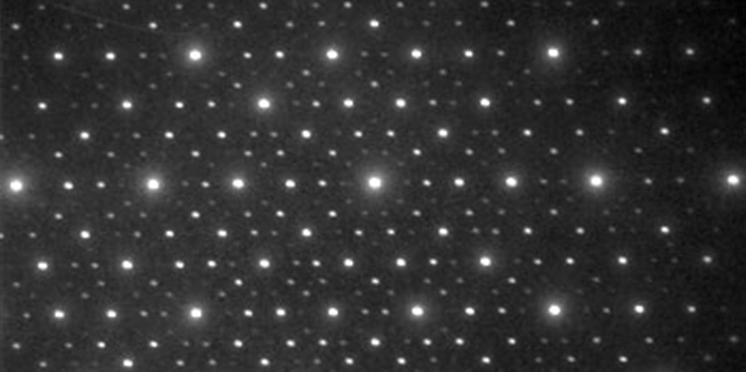field-emission electron gun, FE electron gun
field-emission electron gun, FE electron gun
An electron gun that utilizes the field emission phenomenon.
The field emission phenomenon means as follows: When a strong electric field is applied to the surface of a solid, the potential barrier which encloses the electrons in the solid becomes low and thin, and the electrons are released into vacuum by the tunneling effect.
A <310> single crystal of tungsten (W), with a radius of a curvature of its tip being about 100 nm, is used as the cathode (emitter) of the field-emission electron gun (FEG). The strong electric field is generated around the emitter tip for the electrons in the solid to emit from the solid surface. The gun is operated in an ultra-high vacuum of 10-8 Pa to avoid contamination of the tip due to residual gases. Since the emitter is operated at room temperature, this is called a cold-cathode emitter.
The diameter of the virtual source is as small as 5 to 10 nm. The brightness of FEG is about 108 A/cm2sr., which is about three orders of magnitudes higher than that of the thermionic-emission gun. Thus, FEG is used for a high-resolution SEM. FEG has a lifetime of several years.
Another feature of FEG is a very small energy spread (about 0.3 eV) of the electrons emitted from the cathode. This energy spread is about one order of magnitude smaller than that of the thermionic-emission gun, and about one-half smaller than that of the Schottky-emission electron gun. Thus, FEG helps to acquire a high-resolution image at a low accelerating voltage where the chromatic-aberration effect of the objective lens becomes serious.
However, since FEG is operated at room temperature, the emission current is likely to fluctuate even in an ultra-high vacuum because the emitter surface is contaminated by adsorption of residual gases, and is bombarded by gas molecules ionized by the emitted electrons. To prevent the contamination of the emitter surface, "flashing" is needed to rapidly heat the emitter for cleaning the emitter surface. Since the emission angle of the electrons from the emitter is larger than the thermionic-emission gun and the Schottky-emission electron gun, the electron probe is likely to suffer the aberration of the condenser lens, thus largely decreasing the probe current.
Therefore, FEG is advantageous for high-resolution imaging but disadvantageous for elemental analysis using a wave-length dispersive X-ray spectrometer (WDS) and for crystal orientation analysis by electron backscatter diffraction (EBSD), both of which require a stable and high probe current over a long time.
Figure shows the basic structure of FEG. The emission current is controlled by the voltage applied to the extraction anode. The emitted electrons are accelerated up to a desired energy by the voltage applied to the acceleration anode.

Fig. Basic structure of FEG.
Related Term(s)
Term(s) with "field-emission electron gun, FE electron gun" in the description
Are you a medical professional or personnel engaged in medical care?
No
Please be reminded that these pages are not intended to provide the general public with information about the products.




